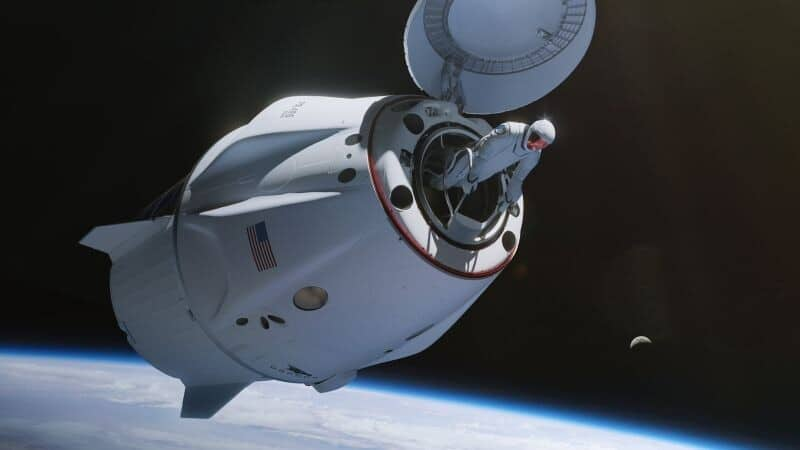
SpaceX's Polaris Dawn mission: The risks surrounding first private spacewalk
What's the story
SpaceX is gearing up for a historic mission - the first commercial spacewalk. The Polaris Dawn mission, scheduled for launch on August 26, will see a crew of four astronauts venture beyond the International Space Station (ISS) for a spacewalk. This mission marks a significant milestone in private space exploration and pushes the boundaries of human spaceflight. However, it also carries inherent risks that the crew must navigate.
The crew
First, meet the crew
The Polaris Dawn mission team comprises billionaire Jared Isaacman, former Air Force pilot Scott "Kidd" Poteet, and SpaceX engineers Anna Menon and Sarah Gillis. This marks Isaacman's second space voyage after his self-funded Inspiration4 mission in 2021. Unlike his previous journey which was a fundraiser for childhood cancer, this trip aims to push the boundaries of private space travel. The crew will embark on a five-day journey, reaching an altitude of approximately 1,200 kilometers, significantly higher than the ISS (400km).
Mission details
Polaris Dawn will venture deeper into Earth's radiation belts
The Polaris Dawn mission will see the crew lift-off in a 13-foot-wide SpaceX Crew Dragon capsule, reaching altitudes not seen since NASA's Apollo program ended in the 1970s. The Falcon 9 rocket will ferry the capsule. Their trajectory will take them into the Van Allen radiation belts—a region of intense radiation surrounding Earth—adding an extra layer of danger to their journey. In addition to this, the crew plans to open their spacecraft's hatch while in space—a first for non-government astronauts.
Suit protection
SpaceX's new EVA suits to protect astronauts
During their daring spacewalk, the Polaris Dawn crew will be protected by SpaceX's newly developed Extra-Vehicular Activity (EVA) suits. These suits were designed and produced in just two and a half years. While the mission duration is relatively short, exposure to radiation can lead to various health problems. Isaacman, founder of payment services company Shift4 and a jet pilot, is funding this mission to advance space technology and test new hardware in outer space conditions.
Spacewalk preparation
Crew to prepare for spacewalk with 'pre-breathe' process
Upon reaching space, the Polaris Dawn crew will start a "pre-breathe" process to prepare for their spacewalk. The crew must remove nitrogen from their blood so that when the Dragon capsule is depressurized and exposed to the vacuum of space, gas bubbles don't form in their bloodstream—a potentially fatal condition. Unlike the ISS's airlocks, which are decompression chambers specifically designed for spacewalks, Polaris Dawn will gradually decrease cabin pressure and increase oxygen concentration over a period of approximately 45 hours.
About the spacewalk
Spacewalk is scheduled for third day
One of the mission's highlights is the planned spacewalk, scheduled for the third day. Isaacman and Gillis will step outside the Crew Dragon capsule, while Poteet and Menon will monitor from inside. Unlike the Primary Life Support System, or PLSS backpacks used by ISS astronauts, SpaceX's suits for the Polaris Dawn mission will rely on long hoses attached to the spacecraft for life support. This means the crew will have less mobility compared to ISS astronauts.
Program goals
Polaris Dawn: The first of three test missions
Polaris Dawn is the inaugural mission in a series of three test and development missions under the Polaris Program, jointly funded and executed by Isaacman and SpaceX. The ultimate goal of this program is to validate technology that SpaceX will need for future deep space human exploration. This includes testing the EVA spacesuits and life-support technologies in real-world conditions. The crew will also perform several health-related experiments and test Starlink laser-based communications in space.